BlackRock’s Green Bet Pays Off as ESG Investing Holds Firm Under COVID-19
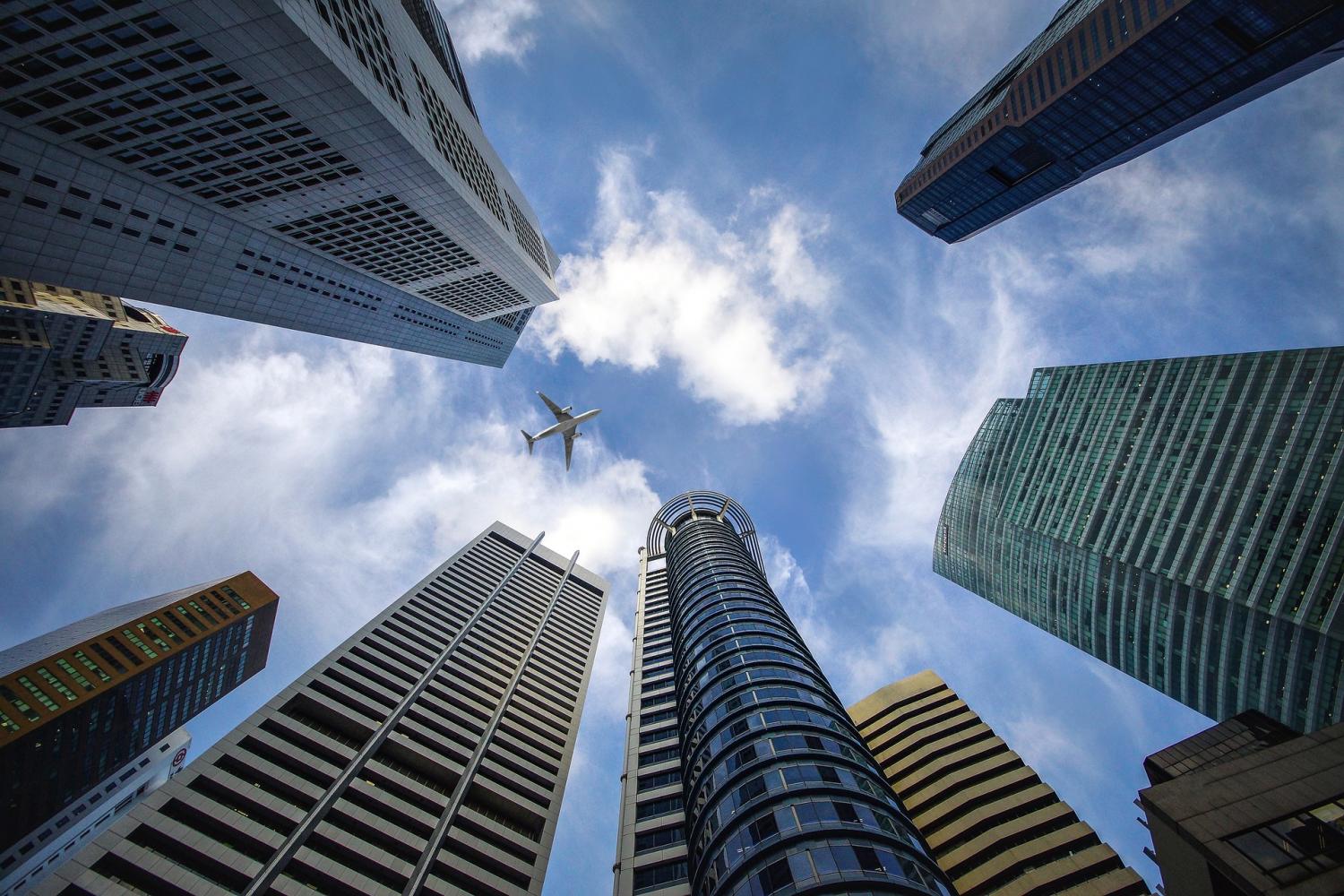

The leading global asset manager BlackRock kicked off the new decade on January 9 with a commitment to the sustainability goals of the clean energy organization Climate Action 100+. Much has changed since then. However, a new report from the global financial services firm Morningstar affirms Blackrock’s renewed commitment to ESG investing, while adding more evidence to support sustainable investing overall.
So far, ESG investing has weathered the COVID-19 crisis
Earlier this month, Bloomberg reported that ESG funds were holding more value than the S&P 500, even as the COVID-19 crisis sent the overall stock market crashing downwards.
That trend is mirrored in the pattern of cash flow for ESG funds.
Last week, Morningstar analyst Jon Hale reported that estimated first quarter flows for sustainable funds in the U.S. set a new record of $10.5 billion in positive territory, despite the surging financial storm at the hands of COVID-19.
The previous record was set in 2019, and the difference wasn’t even close.
As tracked by Morningstar, the trend took off last year when ESG funds reached a record flow of $7.1 billion in the fourth quarter. That, in turn, bested the previous record of $4.8 billion for the second quarter of 2019.
Sustainable investing down, but not all the way down
In analyzing sustainable funds, Morningstar does not cast a wide net. They report on a group of more than 300 mutual funds that broadly integrate ESG. The group does not include funds that address ESG in a piecemeal or limited way.
There was one dark spot in the overall rosy picture. Fixed-income sustainable funds began to wilt under the pressure and suffered outflows in March, a trend consistent with conventional funds.
However, sustainable funds overall remained in positive territory through March. They ended the quarter down from January’s record-setting pace of $5.2 billion for a single month but remained positive territory at $1.6 billion for the month of March.
BlackRock comes out on top
The standout performance of BlackRock during the first quarter is especially significant, considering that CEO Larry Fink has faced some criticism for steering the firm into ESG investing only on the margins.
Last year, for example, analysts with the World Resources Institute noted that BlackRock had achieved some progress but not significant change.
This year is already shaping up to mark a more intensive shift. Joining Climate Action 100+ was a significant move that puts more bite in BlackRock’s sustainability bark. The organization is part of a broader network that is aggressively pressuring corporate boards and CEOs to act on climate change.
In addition, in January Fink released a much-publicized annual letter to corporate executives, in which he nailed down the sea change that is shaping up as the millennial generation flexes its financial muscles.
“…as trillions of dollars shift to millennials over the next few decades, as they become CEOs and CIOs, as they become the policymakers and heads of state, they will further reshape the world’s approach to sustainability,” Fink wrote in conclusion.
The proof is in the pudding. In his analysis of 2020 first quarter results, Hale noted that BlackRock’s “iShares ESG ETFs proceeded to scoop up an astounding $6.3 billion during the quarter, accounting for 60% of the net flows into all sustainable funds in the U.S.”
Other top-performing ESG firms for the quarter were Vanguard, Dimensional and TIAA/Nuveen.
The stock market crisis is far from over, but it looks like the chaos will not extinguish those “glimmers of green,” as ESG investing emerges both as one solution for climate change and as a long-term recovery strategy for COVID-19.
Image credit: Jason Goh/Pixabay
Companies’ True Colors Will Bleed to the Surface During this Pandemic


As this pandemic continues, many of you are juggling telework, schooling from home and worrying about loved ones, while economic catastrophe hangs over all of us like a dark cloud. At first, it may seem like the last thing everyday people are concerned with is discerning good corporate citizens from bad actors. “But make no mistake,” my colleague Mary Mazzoni wrote last month. “People are paying close attention to how companies respond — and how they treat their stakeholders when it matters most.”
We’ve said that several times, several ways, for several weeks — and we can now back it up with data. New research from Porter Novelli/Cone sums up what we've believed all along: Companies that aren’t matching their “corporate purpose” rhetoric with action risk that their “true colors will bleed to the surface,” said the communications agency’s CEO David Bentley.
The survey of over 1,000 U.S. adults offers this snapshot: 75 percent believe companies must ramp up their efforts to support COVID-19 relief. The same percentage agrees that how companies act now will affect their perceptions of these firms into the future.
How companies treat their employees is of paramount importance. While over 60 percent of employees say their companies did a solid job supporting their communities during this time of dire need, about 40 percent think their employers could have taken action sooner. Further, respondents believe companies should take care of their employees first — as in, ensuring they stay safe and continue to receive pay and benefits. Then it comes time to focus on how companies can harness their products and services to help their communities.
The reality of our shopping routines — including the empty aisles bereft of paper products and foods that will long be burned into our memory — is that right now many of us don’t feel as if we have much of a choice in what we buy. But when we can finally look at this crisis from the rearview mirror, over 70 percent of U.S. consumers say they will stop purchasing products from companies they perceived to be irresponsible during this pandemic, according to Porter Novelli/Cone's data.
“The research has confirmed what we intuitively knew to be true. Americans are watching which companies are stepping up at this time — and also which companies are falling down. The decisions businesses make today will define them well after this pandemic has passed, which only reinforces the importance of leading with integrity, honesty, compassion and, ultimately, purpose,” said Kate Cusick, CMO of Porter Novelli/Cone.
Therein lies a warning for pet store chains that insist dog grooming is an “essential service,” while many of their employees say they're terrified of going into work. The same goes for meatpacking companies that didn’t do enough to ensure social distancing, resulting in employees succumbing to the coronavirus — thereby putting the nation’s food supply at risk. And for the gaming, crafting and fabric retailers that wouldn’t close locations until they received cease-and-desist orders, well, to rephrase a timeless saying: No bad deed goes unremembered.
From the weekly Brands Taking Stands newsletter. Be sure to subscribe!
Image credit: Anna Shvets/Pexels
COVID-19 Resource Guide: Insights for Business Leaders
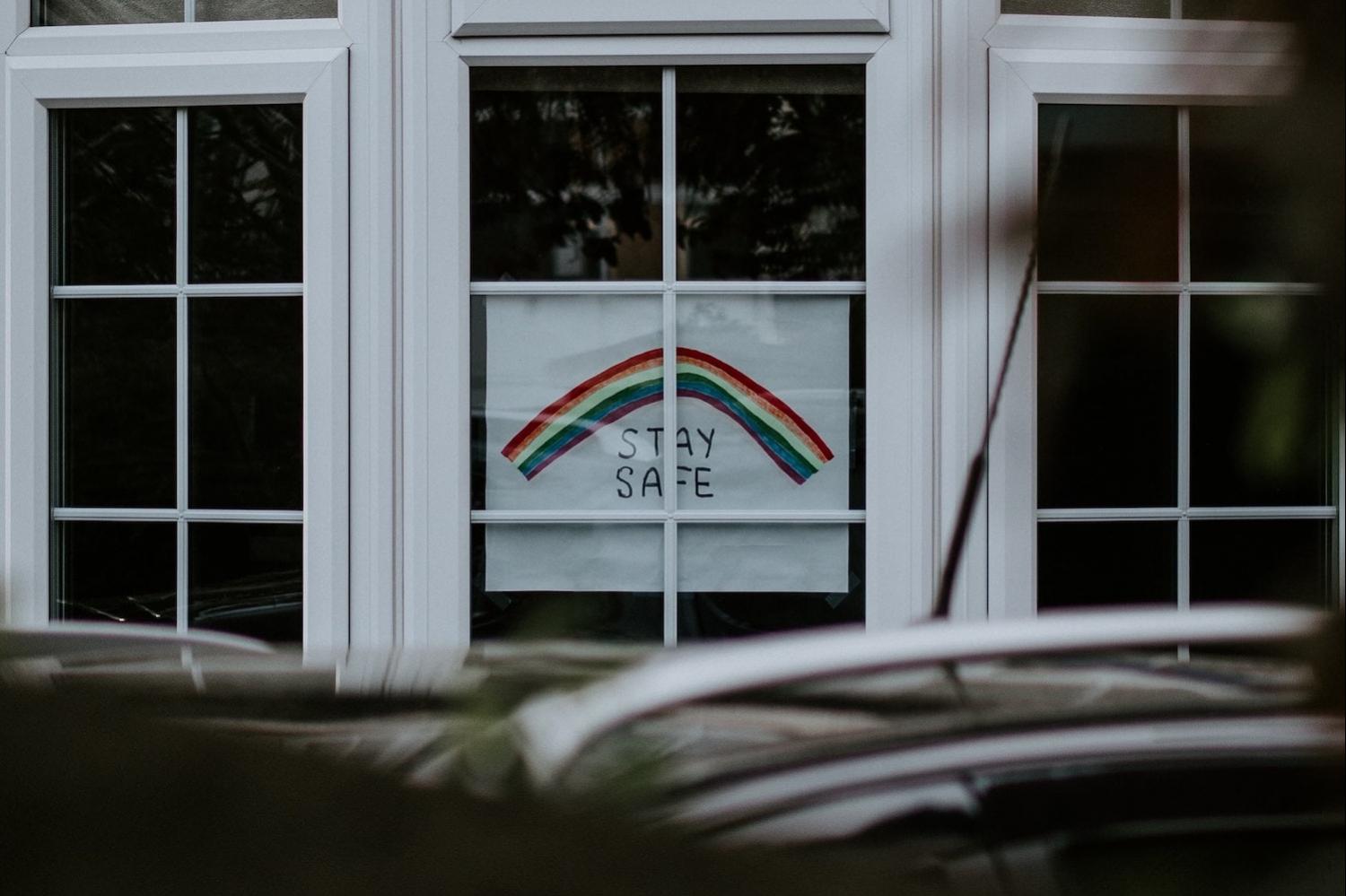
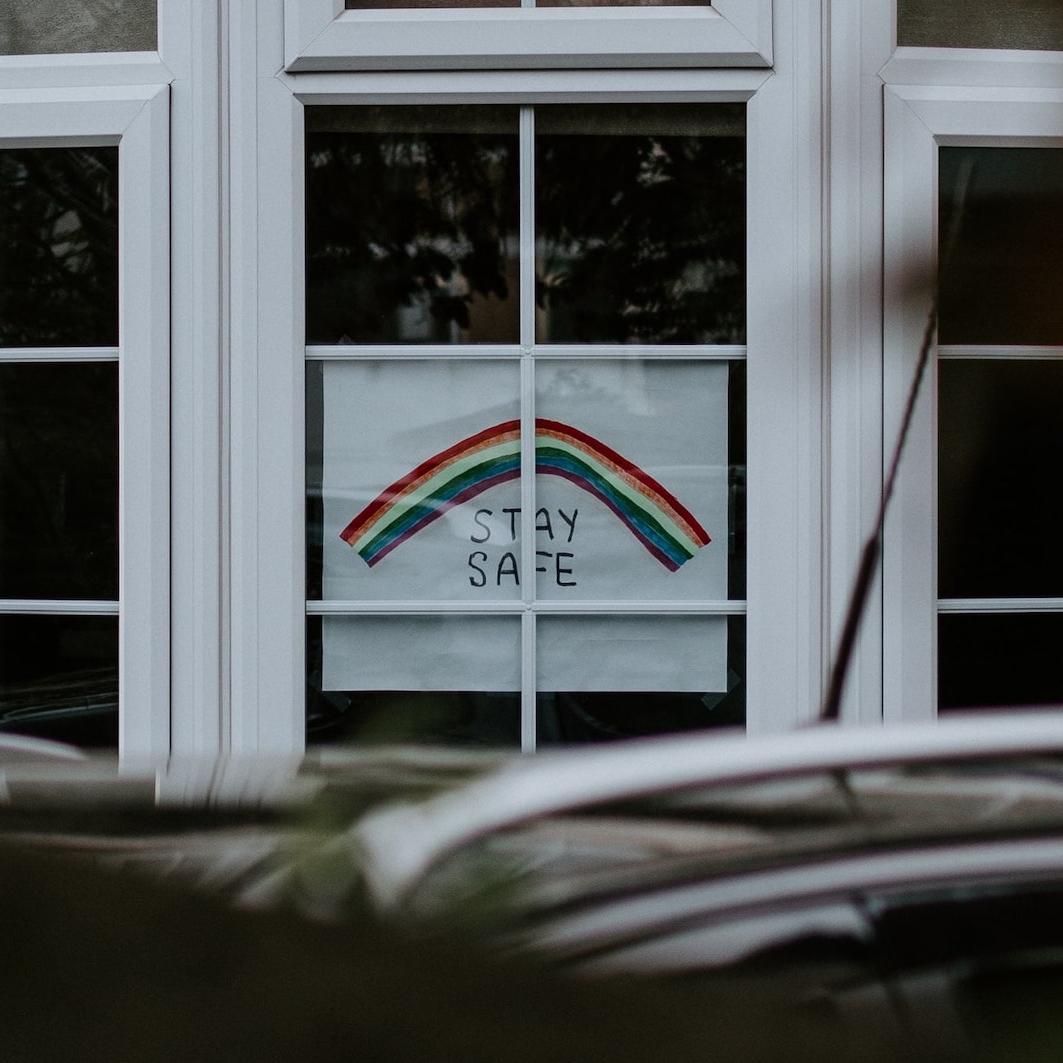
The nature of the COVID-19 pandemic is one of uncertainty, and it naturally raises serious questions for business leaders looking to do the right thing for their communities while keeping their workers employed. In short: We're all worried about a lot of things right now, and we could probably use a little advice.
For vital information about the disease, we all know to turn to internationally-recognized health organizations like the U.S. Centers for Disease Control and Prevention (CDC) and the World Health Organization (WHO). But if you're looking for research, insights and information to guide your response, read on for the resources we continue to reference again and again.
How Companies Can Respond to the Coronavirus
(Read it here)
Resource type: Research paper
Authoring organization: Massachusetts Institute of Technology (MIT) Sloan Management Review
What it is: Researchers led by Michael Hudecheck of the University of St. Gallen in Switzerland analyzed how Chinese companies responded to the early spread of the novel coronavirus, calling out best practices for firms now facing the virus in their communities. Their findings highlight how companies can develop an infrastructure for remote work, prepare for operational shocks, assist their stakeholders when it matters most, and communicate with the aim of inspiring others.
Pull-out quote: "Let others know what you’ve done ... [but] don’t boast: Provide only the most pertinent details, including the amount of funds committed, the key beneficiaries and recipients, and what you aim to achieve with your donation."
Build Back Better: Perspectives on COVID-19 Response and Recovery (Listen here)
Resource type: Webinar and podcast series
Authoring organization: World Resources Institute (WRI)
What it is: This series of virtual seminars highlights ways to promote inclusive, sustainable growth as part of COVID-19 response and recovery. It focuses on how policymakers can bake sustainability and social equity into coronavirus stimulus packages and how business can advocate for policy change.
Pull-out quote: "With the pandemic triggering a global economic slowdown, leaders are searching for ways to stabilize impacted industries and shore up their economies. The decisions they make now will have long-lasting effects, so they must choose wisely."
Business and COVID-19: Supporting the Most Vulnerable (Read it here)
Resource type: White paper
Authoring organizations: Business Fights Poverty and the Harvard Kennedy School Corporate Responsibility Initiative
What it is: This response framework outlines key ways business leaders can work together to support vulnerable populations. Target groups range from small businesses and students learning from home, to women and girls globally who face disproportionate impacts from the pandemic.
Pull-out quote: "The novel coronavirus (COVID-19) pandemic is creating the worst humanitarian and economic crisis in a generation, threatening the lives, livelihoods and learning of people around the world. Government leadership is crucial, but companies and civil society organizations also have a vital role in working together to respond to the immediate crisis and developing plans for longer-term recovery and resilience."
Trust Barometer Special Report: Brand Trust and the Coronavirus Pandemic (Read it here)
Resource type: Study
Authoring organization: Edelman
What it is: Building on Edelman's annual Trust Barometer, this 12-market study based on over 12,000 interviews analyzes the role consumers expect brands to play during the pandemic.
Pull-out quote: "Seventy-one percent [of respondents] agree that if they perceive that a brand is putting profit over people, they will lose trust in that brand forever."
Fighting for a Just COVID-19 Response (Read it here)
Resource type: Blog post
Author: Derrick Z. Jackson, senior climate and energy fellow at the Union of Concerned Scientists (UCS) and the Center for Science and Democracy
What it is: Though groups including UCS insist governments must do more to track data around race and health outcomes related to COVID-19, what we know from initial reports paints a grim picture of black and brown people dying in disproportionate numbers. In Louisiana, for example, black people make up less than 35 percent of the population but account for 70 percent of all deaths from COVID-19 statewide. In this blog post, UCS senior fellow Derrick Z. Jackson draws a parallel to government responses following Hurricanes Katrina and Maria — the effects of which predominantly impacted black and brown people — in a call-to-action for governments and businesses to do better.
Pull-out quote: "The coronavirus gives us the opportunity to declare in our political and medical decisions that we will not drape the cloak of invisibility over historically neglected victims of disaster, as it was in the hollowing out of the black middle class in New Orleans after Katrina and the inhuman abandonment of Puerto Ricans after Maria."
How America’s Largest Employers Are Treating Stakeholders Amid the Coronavirus Crisis (Read it here)
Resource type: Corporate response tracker
Authoring organization: Just Capital
What it is: This corporate response tracker from Just Capital, which ranks companies based on their environmental, social and governance (ESG) performance, analyzes how the 100 largest U.S. employers are responding to COVID-19. It's updated regularly, most recently on March 31.
Pull-out quote: "The coronavirus pandemic and impending recession have created an urgent, unprecedented opportunity for CEOs and corporate leaders to put the promise of purpose-driven leadership and stakeholder capitalism into practice."
See also: 5 Principles to Help Guide Corporate America During the Coronavirus Crisis, another helpful resource from Just Capital.
Resilient Business Strategies: The Road to Recovery Based on Sustainability Principles (Read it here)
Resource type: Blog post
Author: Aron Cramer, president and CEO of BSR
What it is: In this call-to-action, Aron Cramer of the sustainable business coalition BSR unpacks how businesses can not only respond to the immediate needs surrounding COVID-19, but also learn from the experience and build resilience that's grounded in environmental and social sustainability principles.
Pull-out quote: "The era of stand-alone sustainability strategies, with subsequent integration of sustainability into company strategy, needs to end; the creation of resilient business strategies that take sustainability as their foundation needs to begin."
See also: Meet the Moment. Build the Future., another helpful blog post from BSR.
COVID-19 Tracker: Insights for a Time of Crisis
(Read it here)
Resource type: Survey
Authoring organization: Porter Novelli
What it is: This survey of 1,000 U.S. adults offers a snapshot of what people expect from brands during and after the pandemic, with insights on response, communications, employee and community relations, and recovery. Notably, 75 percent of respondents said they will remember the companies that stepped up to help (and those that didn't).
Pull-out quote: "During this hyper-intense moment in our world, every decision we make as leaders demonstrates our character. Whether it’s the communications we prioritize for external consumption or the maneuvers made to care for our people internally, character is on full display. Remember that with each action you take, because even if you don’t, you can be assured that others will."
Shaping a sustainable post-COVID-19 world: Five lessons for business (Read it here)
Resource type: Article
Authoring: Mike Barry, board trustee at A Blueprint for Better Business
What it is: The architect of Marks and Spencer’s Plan A sustainability strategy outlines how business leaders can turn their words about purpose into action that contributes to more equitable societies following the pandemic.
Pull-out quote: "Nothing should detract us from winning this war. But as we fight we should seize the chance too to create a new, more resilient, healthy, equal society that lives in equilibrium with nature."
Coronavirus: How to Survive and Thrive (Read it here)
Resource type: White paper
Authoring organization: Markstein
What it is: Marketing communications agency Markstein leaned on research and case studies from multiple sources to inform business leaders looking to support their communities while maintaining their operations and keeping their workers employed.
Pull-out quote: "No leader will get everything right. The best ones bring humility and vulnerability to the effort, admit their mistakes and adjust."
What Your Business Can Do to Help the Community During the Coronavirus Crisis (Read it here)
Resource type: Article
Authoring organization: Kellogg School of Management at Northwestern University
What it is: Megan Kashner, director of social impact at the Kellogg School, poses three questions for business leaders grappling with how to respond to COVID-19, leaning on case studies from companies doing it right.
Pull-out quote: "There are likely creative ways that almost any company can be of use to those in need."
Image credit: Alex Motoc/Unsplash
As States Look to Science for COVID-19 Recovery, Where Will Business Leaders Stand?
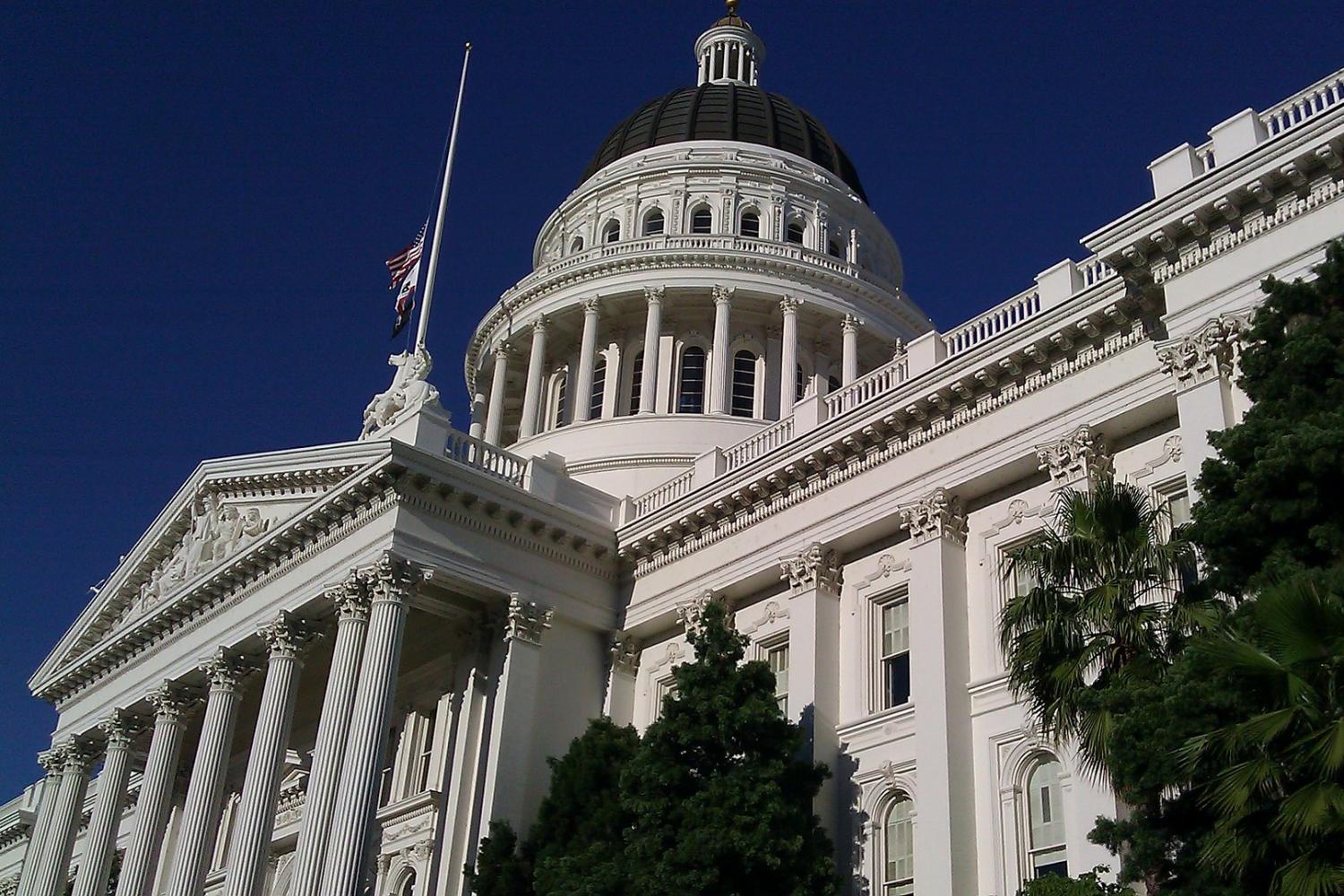
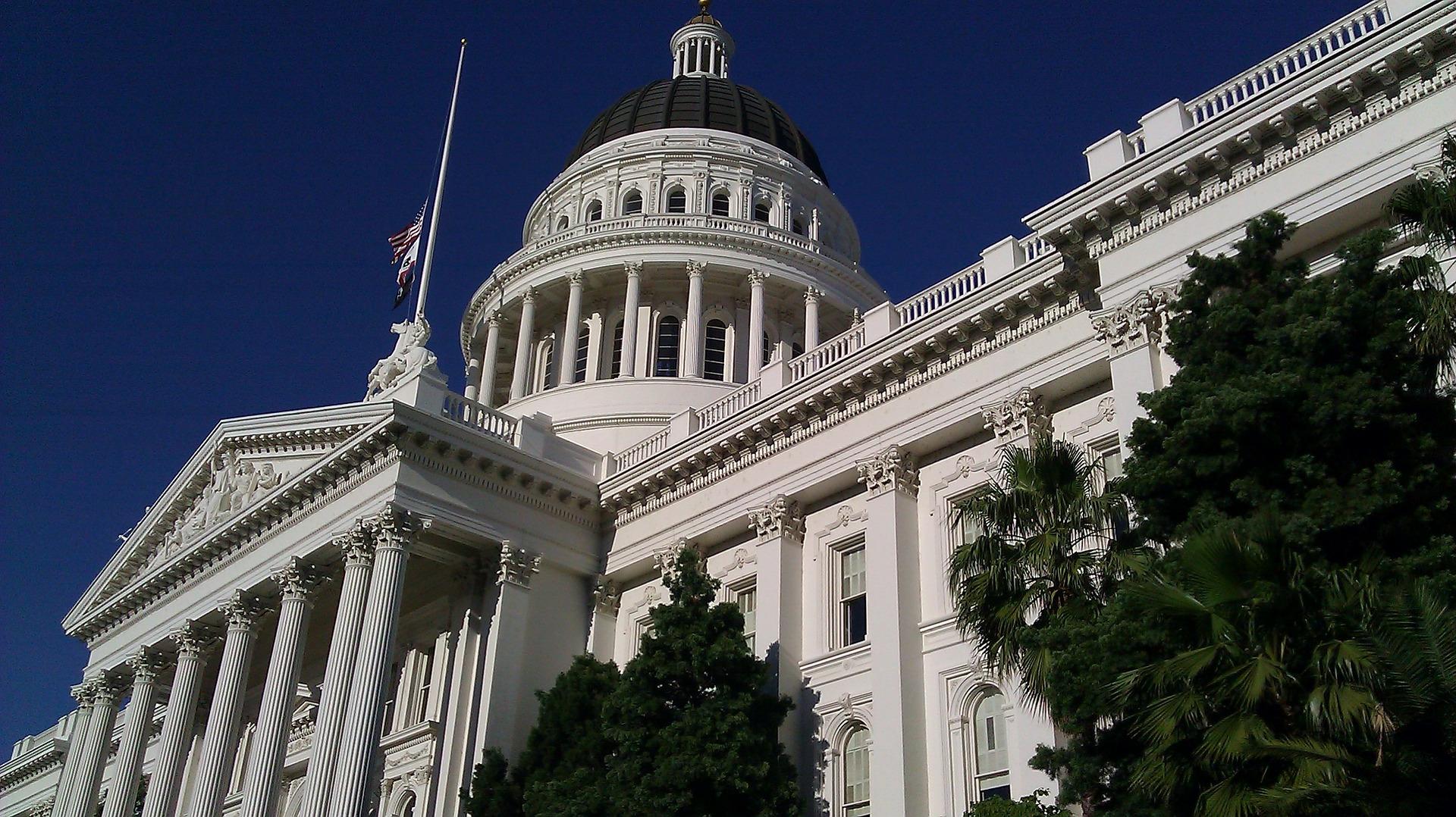
Business leaders are beginning to recognize the value of the Science Based Targets initiative, which guides companies on a pathway towards meeting the Paris Agreement climate change goals. The COVID-19 crisis similarly requires a science-based strategy. However, it is a strategy that must encompass the entire nation. That poses a test of loyalty for U.S. businesses. They are faced with a situation in which the president has not yet adopted a consistent, science-based national response plan, leaving states to pick up the slack.
10 U.S. states act on COVID-19, based on science
When the COVID-19 crisis began to grip the U.S. with force at the beginning of March, there was no national plan in place for the distribution of medical resources, the coordination of social distancing and lockdown measures, and the identification of factors that would determine when and how public life could resume.
One month later, with the White House just as far from coordinating a national plan, two groups of key U.S. states have taken matters into their own hands.
On April 13, the governors of California, Oregon, and Washington organized the entire west coast — home to one in every six people in the U.S. — into a coordinated plan for reopening their economies and controlling COVID-19 into the future.
In a joint statement, the three state governors noted that their combined population gives them an “outsized stake” in COVID-19 planning.
They emphasized that quick, decisive action has been the key to slowing the spread of COVID-19 in their states. Building on those actions, their reopening plan commits each state to a holistic, data-driven approach to public health, including an organized system of testing, tracking and isolation.
Seven states on the east coast are also organizing a similar approach to COVID-19 recovery. The effort includes New York, New Jersey, Connecticut, Pennsylvania, Rhode Island, Massachusetts and Delaware.
As with the west coast collaboration, the east coast partnership will be based on science. It will begin with a study phase, conducted by health and economic officials from each of the seven participants.
In both cases, the process appears to involve at least several more weeks of lockdown or near-lockdown conditions, lifted only under an intensive regimen of science-based public health strategies.
It’s worth noting that both groups of states are also characterized by economic leadership as well as leadership in climate action, most notably in the cases of California and New York.
Opening the door to science-based planning
The east and west coast plans for COVID-19 response provide businesses with a reliable, informed platform for risk mitigation and long range strategizing that is similar to the Science-Based Targets initiative, with one key difference.
Some businesses have been slow to respond to the climate crisis under the (mistaken) perception that its impact is off somewhere in the future. The COVID-19 outbreak is very much a here-and-now, life and death issue of immediate, urgent concern. Businesses leaders who have been slow to act on climate change may more readily perceive the need for an aggressive, science-based response to COVID-19, and they may be more inclined to provide vigorous support for those efforts.
In the absence of a national plan, businesses like 3M and GM have already taken the initiative on producing medical supplies. The emergence of coordinated planning at the state level may provide CEOs with new opportunities to forge alliances and establish leadership on COVID-19 response.
Dueling plans for COVID-19 recovery
As if to put a damper on business support for state-led efforts, the president has been assembling a task force of his own.
Plans for new the task have yet to be firmed up, but it reportedly involves a group of new committees organized around the goal of re-opening the country by May 1. That ambitious target well short of the science-based approach outlined by the east and west coast states.
So far only the names of various Trump advisors have been floated for membership on the new task force. Reportedly the president has also been searching for representatives from the business community as well — without much luck, it seems.
As of Tuesday afternoon, CNN reported that “outside figures have been hesitant to join such a precarious endeavor to reopen the country, though many business officials have told the White House they agree it should happen soon.”
CNN added that “a source who regularly advises chief executives cast doubt on the notion that business leaders would formally join a new White House task force.”
You think?
Adding to the confusion, the goal of the new task force appears to be inconsistent with messaging from the president’s own Coronavirus Task Force, which launched in January. The president has also previously disavowed any responsibility for his administration’s failure to plan ahead and coordinate resources for COVID-19 response among the 50 states, only to declare — falsely — that the president has “total authority” over states – only to walk back those comments yesterday.
As ridiculous as that declaration is, it is important to keep in mind that Trump did not vote himself into office. The whole situation should serve as a reminder that socially responsible businesses can — and should — add another topic to their roster of educational and community programs.
Support for initiatives such as STEM education have become a hallmark of the corporate social responsibility movement – and the offer a model for how companies can push forward on social good. Considering the circumstances we face today, it’s clear that the voting public is long overdue for a refresher course in civics.
Image credit: Denis Hiza/Pixabay
How Society Can Benefit from Multiplier Partnerships
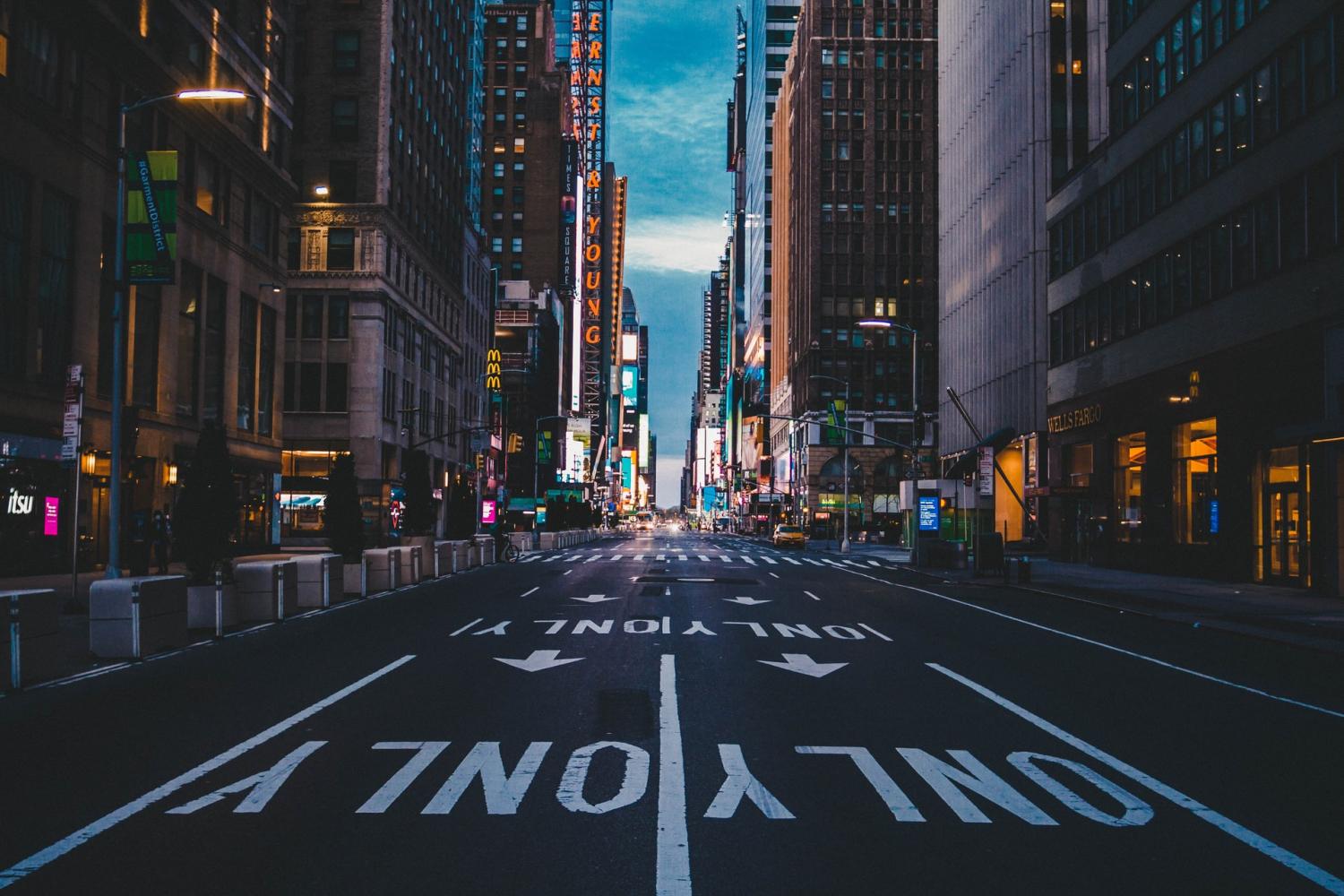
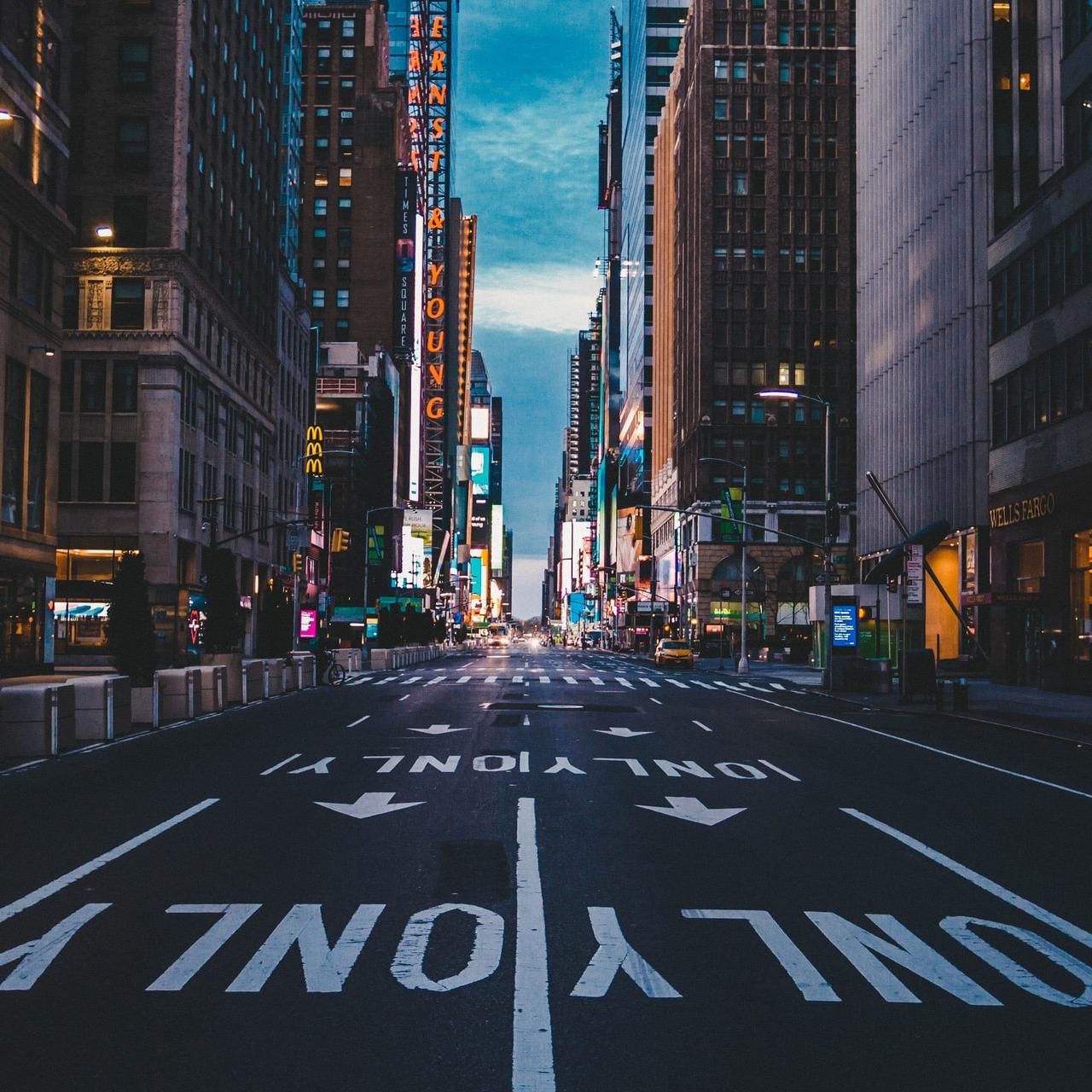
The fear many of us now feel is matched only by uncertainty. Unemployment is soaring; countless businesses are shuttered, and many of them will never reopen; and the vast majority of us are isolated from our families, friends and colleagues. City streets that were once bustling such as those in New York City (shown above) are ghost towns. Organizations across all sectors are trying to keep their heads above water during this crisis, and when we finally emerge from the COVID-19 pandemic, both businesses and nonprofits will be navigating unknown seas. During this time, the forging of multiplier partnerships is a tactic that leaders of organizations could consider in order to share knowledge and in the end, do good.
Multiplier partnerships: beyond the terminology
“In a nutshell, I would define multiplier partnerships concept as ability to identify unique synergies and organizational alignment around global issues and challenges to deploy impact-multiplying solutions,” said Anna Tunkel, who leads global strategic partnership initiatives and partnerships at the communications consultancy APCO. “In my experience, successful multiplier partnerships go beyond philanthropy or corporate sponsorships, and truly lean into organizational strengths, strategies and vision to unleash a broader societal impact.”
From Tunkel’s point of view, organizations now have little choice but to harness the power of partnerships to address society’s most dire needs. In a recent op-ed on the international affairs news site Diplomatic Courier, Tunkel insisted that the cooperation of companies, nonprofits, academics and government agencies can help take on challenges that are exacting a tool on people worldwide. Such coalitions can work together on the strengthening of public health systems; controlling the spread of diseases and rolling out treatment strategies; or finding new ways to protect jobs or provide a social safety net.
One’s first reaction to the concept of multiplier partnerships is that, well, we are witnessing impressive action, already, right? We have seen efforts including the fast action Governors Gavin Newsom of California and Mike DeWine of Ohio have taken; the largess of the Gates Foundation and Bill Gates himself; the huge donation to the COVID-19 fight by Twitter and Square CEO Jack Dorsey; and industries blindsided by this pandemic, including airlines and hotels, which have lent their assets to helping healthcare workers fight the novel coronavirus.
But from Tunkel’s perspective, the sharing of people and capacity can result in an effort that could be far more effective than if each individual organization acted alone. “There are so many resources and initiatives that operate in silos, but this creates opportunities to connect the dots and mobilize better on today’s pressing issues,” said Tunkel.
Before COVID-19, multiplier partnerships were already paying off
Tunkel has argued that the world as we know it will be divided into two eras: BC and AC, as in before COVID-19 and after. Prior to this global pandemic, these types of partnerships certainly existed, but organizations’ leaders generally viewed them as a “nice to have.” Yet as the global economy tumbles toward contraction this year, hundreds of millions of families will feel pain at all levels for the foreseeable future; hence such coalitions will become a “must have.”
One “pre-COVID” multiplier partnership to which organizations can look as an exemplar is the Real Play Coalition, which Tunkel has advised in recent years. Founded three years ago, its members include the global engineering and design firm Arup, Ikea, National Geographic, the Lego Foundation and UNICEF. The group’s overarching goal is to pursue a global movement that prioritizes the importance of play – not only because it’s an important part of childhood, but because such interaction is important in children’s development and learning.
“It’s important to note that the importance of multiplier partnerships like the Real Play Coalition is that they are not about pouring money into such an effort, but instead driving collective actions and drawing on full set of resources and knowledge of each organization,” she added.
Building bridges across borders and between silos
One example of a current multiplier partnership that has been proactive in addressing the COVID-19 crisis is the Committee of 100 (C100), which describes itself as a non-partisan organization of leading Chinese Americans in academia, the arts, business and government. Founded in the late 1980s, C100 is currently harnessing its resources on several fronts. On one hand, the organization is working to drive awareness and find solutions to the outbreak of racial slurs and violence against the Asian-American community. In addition, the group raised $1 million to acquire personal protection equipment (PPE) and then arranged for an airlift to take those supplies to the U.S.
That may seem like a drop in the bucket at first glance, and true, we’ll need many more drops to fill that bucket. The good news is that evidence suggests that in the midst of all this chaos, we’ll hear more about such coalitions in the weeks and months ahead. Unilever, for example, has retooled its timeless handwashing campaign and is working with a partnership that includes the United Kingdom’s government to showcase the importance of this habit to stop the spread of coronavirus.
“What Unilever and its partners are doing as they turn their resources to developing markets, thereby shifting focus to the most vulnerable is a testament to the impact of multiplier partnerships,” said Tunkel. “After all, global multinationals, many which often have a GDP larger than the world’s smaller nations, can generate huge impact with their capacity to reach citizens worldwide – and that’s magnified with the expertise and resources that a broader universe of actors – smaller companies, start-ups, universities, multilateral organizations, NGOs and governments can share.”
Image credit: Paulo Silva/Unsplash
A Glimmer of Hope: We Can Restore Marine Health by 2050


While people are hunkered down in their homes, waiting for the novel coronavirus to halt its spread, some hopeful news about marine health has emerged.
In the midst of sheltering in place, ocean health may not be top of mind for most. Nevertheless, in order for ocean life to survive and even thrive, society needs to tackle several challenges, including global warming, plastic pollution and unsustainable fishing.
In this time of global health obstacles and environmental challenges, some hopeful news goes a long way, especially as ocean temperatures continue rising and scientists project regular global coral bleaching. Today, hope comes in the form of a study published in Nature on April 1, which contends that marine health can be restored by 2050 - and shows exactly how.
"We are at a point where we can choose between a legacy of a resilient and vibrant ocean or an irreversibly disrupted ocean," Carlos Duarte, a marine ecology researcher, told Phys.org. "Our study documents recovery of marine populations, habitats and ecosystems following past conservation interventions. It provides specific, evidence-based recommendations to scale proven solutions globally.”
Human action can make a difference for marine health
The study — a collaboration between marine scientists across 10 counties and 16 universities — not only calls out areas for improvement; it also identifies the benefits oceans have reaped due to human action and nature’s innate resilience.
“A lot of us, recently, have seen signs of hope,” Boris Worm, a marine ecologist at Nova Scotia’s Dalhousie University, told The Globe and Mail. “Not to say that the world is getting better wholesale. But there are now hundreds and hundreds of examples that when we do something, the ocean displays remarkable resilience.”
These “signs of hope” for marine health worldwide are worth calling out.
First, less than 1 percent of the world’s oceans had some form of legal protection in 2000. Now, almost 8 percent is protected. Evidence also indicates that commercial fishing is not as detrimental to wildlife as it once was, and fertilizer and sewage pollution are diminishing. Finally, nearly half of the 124 marine mammal species populations are increasing.
“Even habitat loss is less prevalent than it was before,” Dr. Worm said. He points to myriad examples of local actions that have led to local results.
Action at many levels is still needed to protect oceans
These signposts on the path to restoration are a helpful reminder that coordinated action makes a difference. In an effort to refine and encourage global endeavors, study authors identify how to act and where.
A comprehensive review of ocean conservation efforts revealed the ecosystems and elements essential to whole-ocean recovery. Such habitats include salt marshes, mangroves, seagrasses, coral reefs, kelp, oyster reefs, fisheries, megafauna and the deep sea. Within each of these bite-size components, conservationists can concentrate efforts using various interventions.
The Nature study describes these steps as complementary “recovery wedges,” and they include the protection of vulnerable habitats and species; harvesting resources with caution; launching marine health efforts starting with the restoration of important habitats; a focus on reducing pollution; and finally, mitigating climate change.
Recovery wedges are meant to be used together, or in other words, “stacked.” The report identifies specific wedges to activate within key ecosystems and environments.
While all of these recovery wedges are critical, climate change is priority number one. “If we don't tackle climate change and raise the ambition and immediacy of these efforts, we risk wasting our efforts," Professor Duarte told BBC. Duarte also mentioned overfishing and plastic pollution as significant elements. While single-use plastics have become useful, even essential, during this pandemic, plastic pollution in the ocean remains a serious issue.
What would wholesale restoration cost? The study puts the expense for sustained ocean health at $10 to 20 billion per year, plus more for restoration. If that seems overpriced, consider that the authors foresee a $10 return for every $1 invested in such restorative efforts, and more than a million new jobs.
The ocean already contributes 2.5 percent of global GDP — through ecosystem services, food, recreation and more — and employs 1.5 percent of the global workforce. That adds up to an estimated $1.5 trillion generated in 2010, and double that amount by 2030. This investment just makes sense — it’s tried and true.
"Rebuilding marine life represents a doable grand challenge for humanity, an ethical obligation and a smart economic objective to achieve a sustainable future," Susana Agusti, a professor of marine science, told Phys.org.
Image credit: Keith Luke/Unsplash
Clean Supply Chains Can Help Manufacturers Change the World


Manufacturers are putting more pressure on their supply chains to clear their materials of carbon emissions and other environmental impacts. In a new wrinkle, some manufacturers are not waiting around for their suppliers to act. They are investing in new research that can have a positive impact far beyond their own needs.
L’Oreal supports a new bio-based PET plastic recycling process…
The latest demonstration of this willingness to invest in change comes from L’Oreal.
In the context of public awareness regarding the ocean plastic pollution crisis, in 2017 L’Oreal formed a research consortium with another France-based company, the bioindustry research firm Carbios. The collaboration aimed at fast-tracking Carbios’s experimental recycling process and pushing it up to industrial scale.
The Carbios method involves using enzymes to break PET plastic molecules down into their component monomers (as in molecules that can be bonded to other identical molecules). Once separated out, the monomers can be purified and recombined. The result is a recycled plastic that has the same properties as virgin PET.
This enzyme-based approach has the potential to make a significant impact on PET recycling. With conventional recycling, the end product loses some of the properties of PET, and that limits the range of potential uses. For example, the ability for recycled PET bottles to be churned once again into new bottles has its limits. And in any event, the entire recycling process is complex, in part because it is quite energy- and resource-intensive.
Furthermore, the bio-based process saves energy compared to conventional PET recycling, which is based on the application of heat. The new process could lead to reduced costs, a smaller carbon footprint and far more sustainable supply chains worldwide.
…and invests in new recycling technology
“Potential” is the key word here. For all of its potential advantages over conventional PET recycling, in 2017 the bio-based process was still in research phase.
For that matter, the entire field of bio-based plastic recycling (or biodepolymerization, in technical jargon) is still in a pre-commercial phase. Scientists have been experimenting with a range of biological processes including microbes, mealworms, and grubs in addition to enzymes.
Nevertheless, by April 2019, the Carbios-L’Oreal bio-recycling collaboration attracted the interest of Nestlé Waters, PepsiCo and Suntory Beverage & Food Europe, which all joined in support of the effort.
Last summer L’Oreal also upped its commitment by investing in the new bio-recycling technology through its “BOLD Business Opportunities for L'Oréal Development” venture capital fund, which the company launched in 2018.
The bet could pay off for supply chains
It seems that L’Oreal’s bet may pay off. Last week, Carbios announced that a formal study of its PET recycling technology was published in the science journal Nature.
The research, conducted with the Toulouse Biotechnology Institute, indicates that Carbios’s new tailor-made enzyme can perform far more efficiently than others.
Previously, researchers found that it takes several weeks for enzymes to break down plastic, without achieving any substantial amount of degradation.
In contrast, the Carbios study describes a degradation yield of 90 percent in just 10 hours.
The next challenge is to translate the laboratory achievement into a real-world process that in the long run can benefit supply chains. Plans are in the works to test the process at a demonstration facility near Lyon.
If the demonstration project mirrors the findings of the research, Nestlé, PepsiCo and Suntory are all lined up with L’Oréal to claim the first recycled bottles to roll off the assembly line.
One road, many lanes to an ocean plastic solution
If successful, the new bio-based technology could increase the value of PET waste, helping to motivate an increase in the recovery rate.
As it stands, there is plenty of room for improvement. In the U.S., for example, the recycling rate for PET bottles and jars was 29.1 percent in 2017.
The success of the Carbios process could also help stimulate investor interest in developing bio-based recycling for other types of plastic. That’s important because the recovery rate for other plastics is dismal compared to PET.
In 2017, the U.S. generated a total of 35.4 million tons of plastic waste and recovered just 3 million, for a recycling rate of 8.4 percent.
Increasing the plastic recovery rate should help make a dent in the ocean plastic pollution crisis, but it is important to note that recycling alone cannot solve the problem.
Curbing the use of single-use plastics, reducing the amount of plastic used in product packaging, and using bio-based materials instead of petrochemicals are all part of the toolkit necessary to stop plastic to flowing into the globe's oceans.
Image credit: Willfried Wende/Pixabay
Homeless Americans Are Particularly Vulnerable to COVID-19: What Can Cities and States Do?
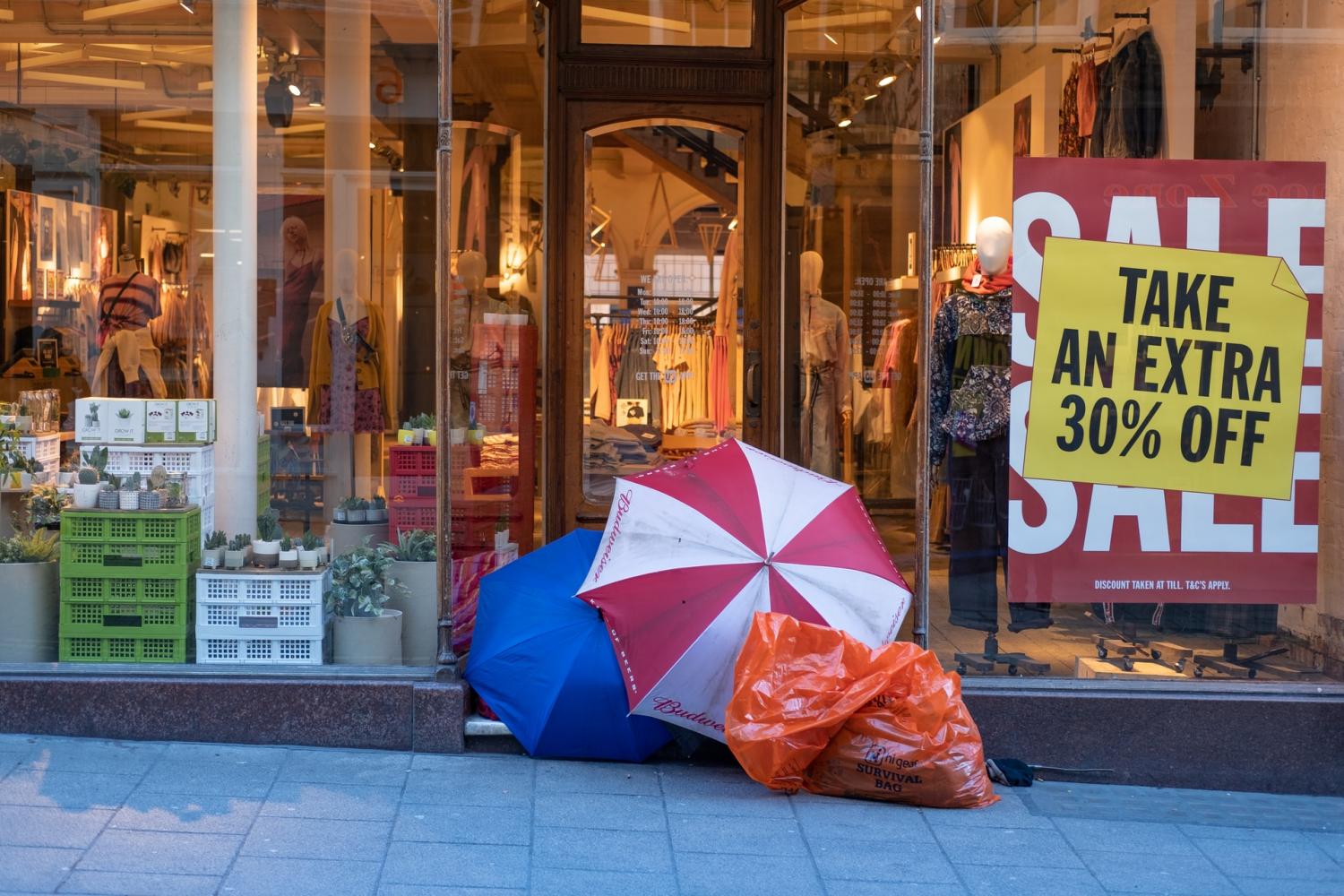
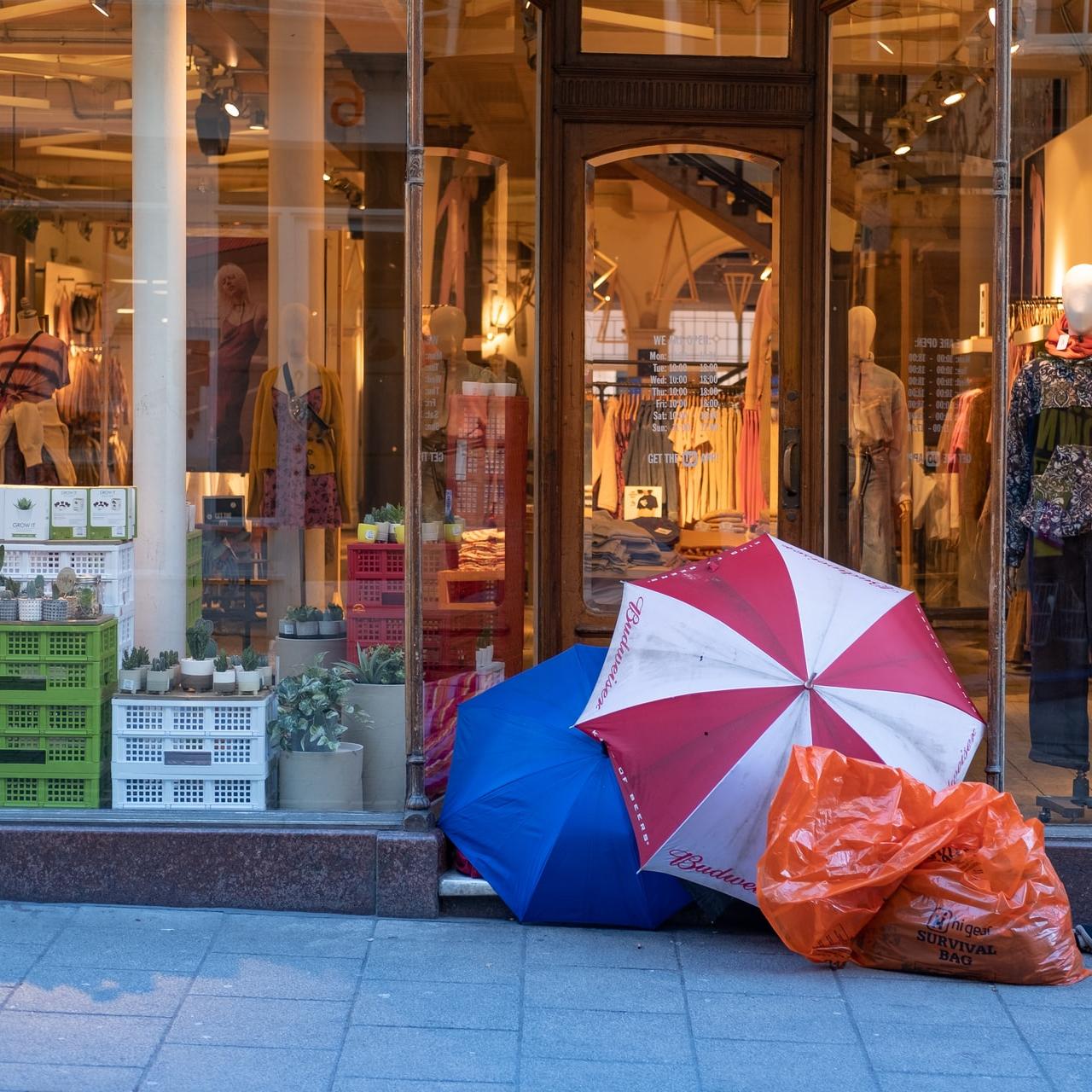
It should come as no surprise that the homeless population is among the most at-risk groups in the United States amid the global COVID-19 pandemic. But a recent study raises alarms at just how vulnerable the country’s homeless population is, estimating that they are more than twice as likely to be hospitalized and two to three times as likely to die. The risk turned quickly into reality in San Francisco, where 70 people tested positive for the virus at the city’s largest homeless shelter.
Public funds for the homeless just aren’t there
The study, conducted by a team of professors from University of Pennsylvania, UCLA and Boston University, also revealed the severe economic ramifications of the crisis on homelessness. It estimated that $11.5 billion is needed annually to meet the additional needs suddenly sprung onto the shelter community, a figure far greater than the $4 billion directly allocated for homeless assistance grants from the government’s $2.2 trillion stimulus package.
The strict social distancing guidance prescribed by the U.S. Centers for Disease Control and Prevention (CDC), urging people to keep at least six feet apart, introduced new challenges for shelters and temporary housing units. Facilities used to optimizing space to house as many homeless people as possible were suddenly searching for more space to adhere to the guidelines. This, paired with the urgent need to protect the estimated 300,000 unsheltered persons in the U.S., leaves a shortage of as many as 400,000 beds to effectively respond to the COVID-19 crisis.
“We estimated that there would need to be density reduction [in the shelters],” Dr. Dennis Culhane, a key researcher on the study, said on a recent webinar hosted by the National Press Foundation. “Most homeless shelters are quite crowded...in many cases adult shelters have bunk beds.”
Cities with swelling homeless populations and a high presence of the virus, like San Francisco, are finally beginning to embrace emergency tent encampments (other cities have been slower to abide by CDC directives to stop encampment sweepings). These sites, likely to be in enclosed outdoor spaces like in parking lots, underneath freeways or along riverbeds, would be roughly 10,000 square feet total and ensure a 200 square feet buffer zone between each tent.
The encampments would minimally feature bathrooms, drinking water, handwashing stations and three meals a day, as reported in local media.
The hospitality sector has the assets to step in and help
Along with encampments, cities are using hotels, motels and recreational vehicles to house the homeless, though Business Insider reported that there are more vacant hotel rooms in San Francisco than there are homeless people. Putting homeless people up in hotel rooms may provide logistical hurdles to hotel and security staff, but the two-fold economic and health benefits could prove to be business- and life-saving. Hotels shuttering from the economic impacts of shelter in place orders could open their doors to homeless people and their wallets to government agencies and private donors willing to foot the bill.
Project Roomkey, a week-old initiative in California, pledged to secure as many as 15,000 hotel and motel rooms to provide safe housing for the state’s homeless. FEMA will cover three-quarters of the cost, including essential services like laundry, security and three meals a day. At the city-level in California, San Francisco Board of Supervisors are meeting this week to vote on an emergency ordinance that, if passed, would require the city to procure 7,000 unoccupied hotel rooms for the homeless.
Similar initiatives and movements around the country have been subject to criticism, mainly because of fears that approaches aren’t accounting for proper health precautions. Advocates in New Orleans, for example, are urging officials to take a holistic approach after a medical student and homeless volunteer rang alarms that the city was failing to adequately use medical equipment and adhere to health guidelines.
To New Orleans’ credit, city officials moved quickly to change its course, opening up additional hotels and more strictly following social distancing guidelines. The need to house the NOLA’s homeless in hotels became evident after one of its encampments became infested with rats.
Forced to shelter in place with nowhere to go
The closure of libraries, restaurants, coffee shops and other public gathering spots have also put a strain on the homeless population, limiting their access to facilities like restrooms at a time when health officials recommend routine and thorough handwashing as a means to quash the virus. These pop-up hand-washing stations, showers and other facilities have temporarily subdued the issue in certain areas, but it can be expensive and unwieldy to mobilize such services to all encampments.
“When we’re in the midst of a public health emergency and when our collective health depends on our ability to have a home to quarantine or isolate in, it becomes more obvious than ever that housing is health care,” Diane Yentel, president of the National Low Income Housing Coalition told Vox. “We can’t keep entire communities healthy in the midst of a pandemic if any one of us are left without a home.”
Beyond the stimulus’ $4 billion pledged funding directly for homeless services and the additional $5 billion set aside for affordable housing improvements, the federal government also issued an eviction and foreclosure moratorium through April. This will prevent the newly unemployed, at-risk and low-income people from entering homelessness due to their inability to cover rent or mortgage payments. This stay of eviction is enormously important, especially given that nearly a third of Americans didn’t pay rent between April 1 and April 5, according to data from the National Multifamily Housing Council.
While the government’s decision to stall evictions will limit the number of new homeless people, it will likely fail to protect those subject to informal evictions. In some cities, like Milwaukee and New York, informal evictions, representing roughly half of all evictions, are nearly outpacing court-ordered evictions. In the crisis months where landlords are receiving fewer timely payments and are legally bound to let tenants stay in their homes, landlords may become more reliant on harder-to-track informal evictions. Renters unfamiliar with the federal moratorium may opt to leave for fear of a court-ordered eviction, a blemish that stays with renters’ records for years and introduces a monumental hurdle for obtaining new housing.
While the government’s decision to stall evictions will limit the number of new homeless people, states will have to maintain the large and dire responsibility to care for the estimated 568,000 homeless people in the U.S. As state and city governments grapple to find additional beds during these uncertain times, public-private partnerships with hotels, motels and trailer companies will remain the key to mitigating the free fall.
Image credit: Dan Burton/Unsplash
The COVID-19 Pandemic Could Mean Fewer Farmworkers
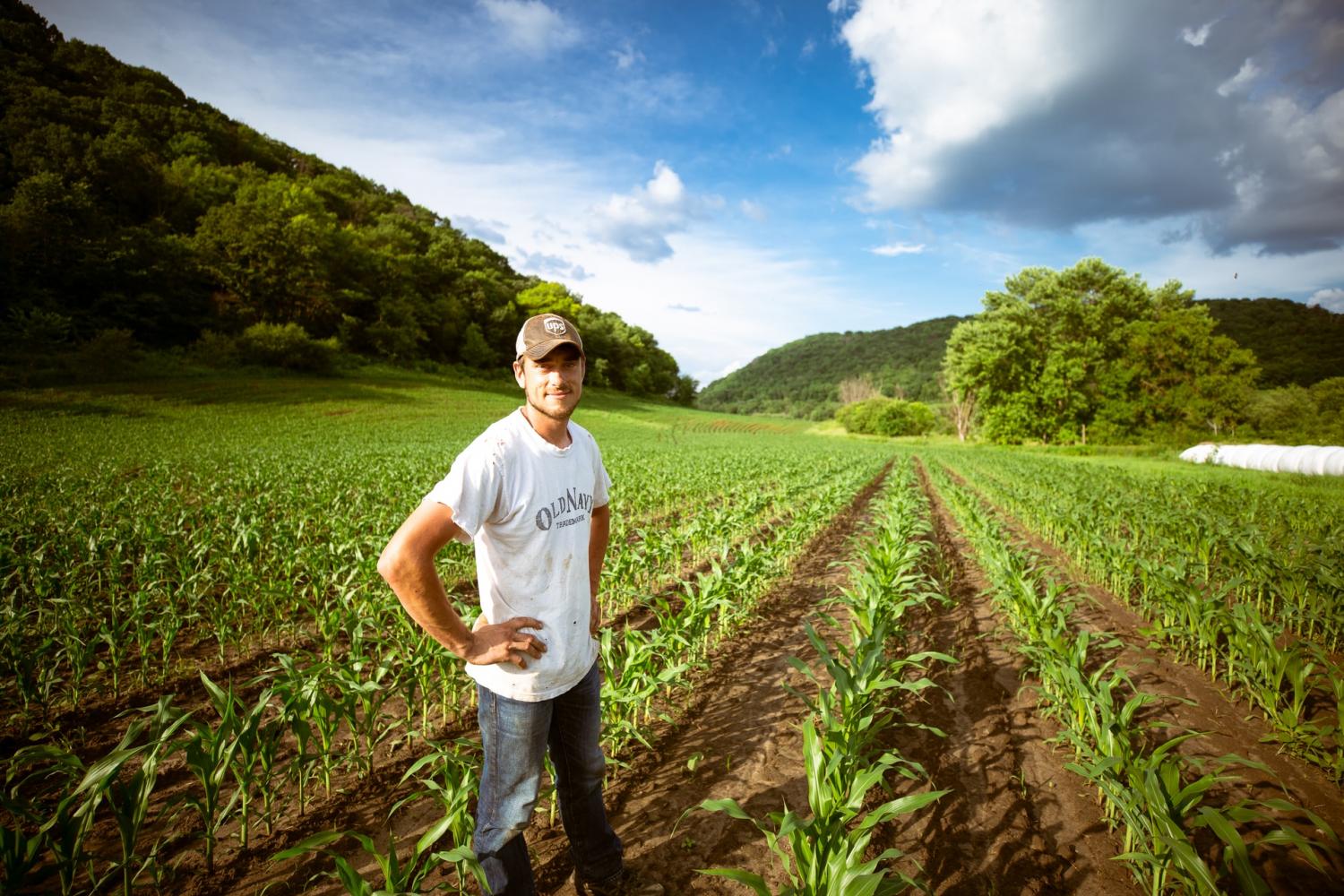
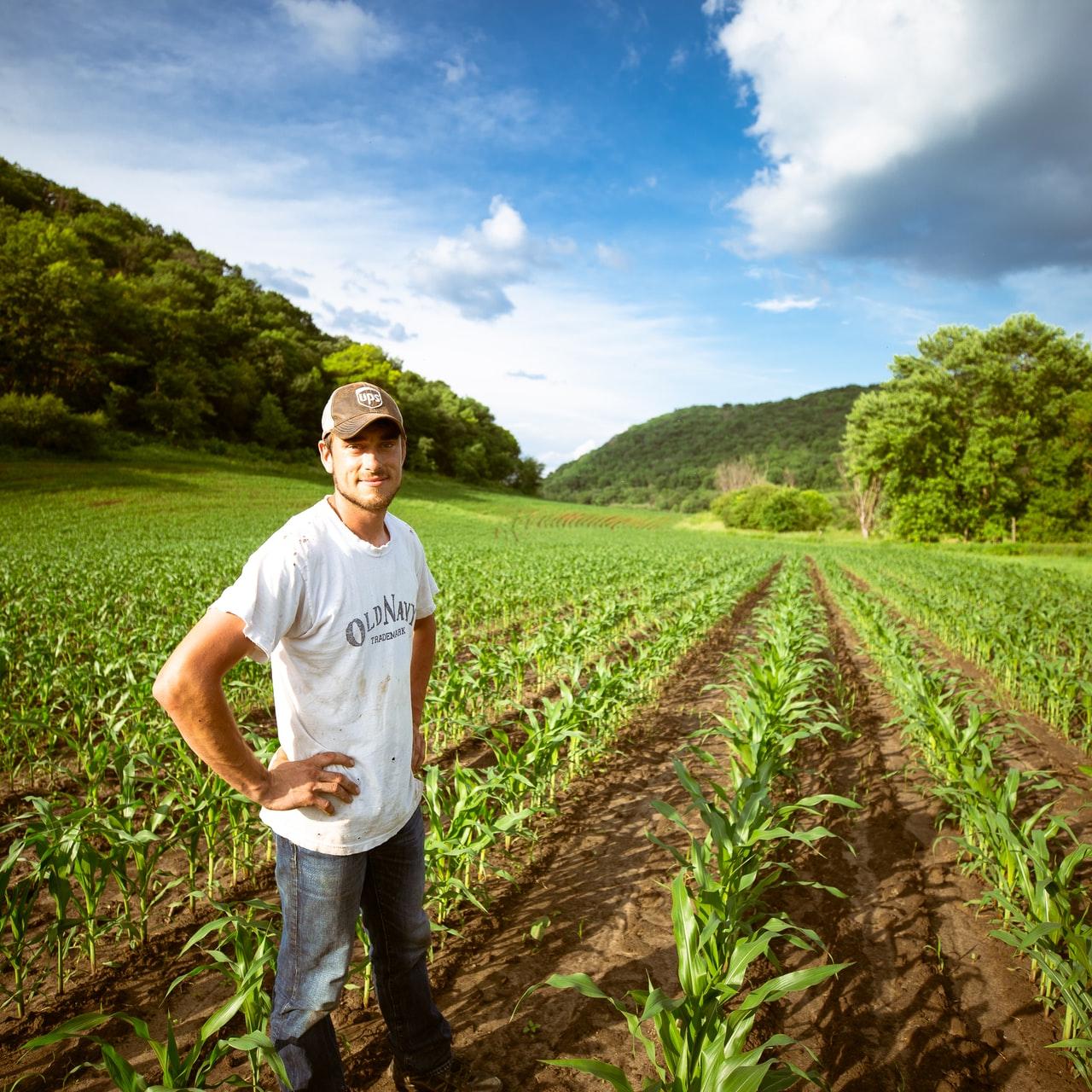
Like other sectors, the COVID-19 crisis affects agriculture. Let’s start with the recruitment of farmworkers needed to staff the 2 million farms across the U.S. As the data suggested the number of coronavirus infections would surge, on March 18, the State Department temporarily suspended immigrant visa processing services in Mexico as a response to the worsening pandemic. But six days later, the department suddenly announced revisions for processing visa applications.
Confusion reigns over how workers can get visas to work on U.S. farms
The change in approach toward processing visa applications by Mexican farmworkers came over concerns that the restrictions would lead to a shortage of farmworkers in the U.S. The State Department waived the visa interview requirement for the H-2A application process, which allows U.S. employers to bring foreign nationals into the country to fill temporary jobs in the agricultural sector.
Secretary of State Mike Pompeo authorized consular officers to expand the categories of all H-2 visa applicants whose applications can be processed without an in-person interview. As of press time, the in-person interview requirement can be waived for both first-time and returning H-2A applicants, as well as H-2B applicants, or temporary foreign workers not employed in agriculture. “We anticipate the vast majority of otherwise qualified H-2 applicants will now be adjudicated without an interview,” the State Department stated in an announcement.
The influential American Farm Bureau Federation commended the revisions. “We applaud the administration for recognizing the contributions H-2A and H-2B workers make on farms across this country to ensure Americans have access to healthy, affordable food,” said American Farm Bureau Federation President Zippy Duvall.
Nevertheless, farmers across the U.S. face daunting labor challenges in the coming months.
Fewer farmworkers expected despite State Department revisions
The H-2 program is an important part of U.S. agriculture, or as the State Department boldly describes it, “The H-2 program is essential to the economy and food security of the United States.” The H-2A Temporary Agricultural Program provides a legal way for immigrants to perform farm labor on a temporary basis. It is the only visa program that brings in farmworkers to temporarily work in the U.S. Under the program, immigrants can perform farm work for up to 10 months. The amount of H-2A positions requested and approved increased five-fold from 48,000 positions in 2005 to almost 243,000 in 2018.
Despite the revisions announced by the State Department, there is still ongoing confusion about U.S. visas. Reuters reported that because of the confusion, far fewer workers have been arriving in the northern Mexican city of Monterrey, approximately 125 miles from the U.S. border and thereby a traditional stop for workers seeking these H-2A visas. If confusion about visa rules continues, this could mean fewer farmworkers come harvest time.
A continued decrease in the number of farmworkers means that farmers will face more challenges in harvesting crops to meet U.S. consumers’ demand. A report by the bipartisan immigration advocacy group New American Economy estimated that U.S. farmers would have produced $3.1 billion more in fresh fruits and vegetables a year by 2014 if they had more access to legal immigrant farm labor.
On that point, California serves as a solid example. California’s farmers grow over a third of the nation’s vegetables and two-thirds of the nation’s fruits and nuts. Most farmworkers in California are from Mexico. That means the nation could end up with less fresh fruits, nuts, and vegetables if there are fewer farmworkers from Mexico in California, which also means fewer exports of coveted crops like pistachios and almonds.
Could native-born American workers fill the gap?
Would American workers fill the gap? The answer is maybe. New American Economy looked at North Carolina in 2011, which back then had 6,500 open farm jobs in the state at the start of the season. Only 265 American workers applied, and only seven of them lasted the harvest season. However, a recent National Agricultural Workers survey found that a quarter of crop workers were born in the U.S. The Economic Policy Institute (EPI) thinks the data by the NAW Survey indicates that some unemployed U.S.-born workers, if given the opportunity and paid a fair wage, could be recruited to work within the agriculture sector.
Native-born American workers are not the only option to harvest the nation’s crops. Many immigrants that have worked in service industries across the U.S. have lost their jobs due to COVID-19. As a report in Quartz recently made clear, non-citizens working in the U.S. are far more vulnerable than those who have legal citizenship: They make almost 40 percent less than U.S.-born or -naturalized workers, 30 percent lack health insurance, and the vast majority of them will not benefit from the federal government’s $2 trillion omnibus economic relief package.
And even if they had legal status, the complexities of the federal government’s economic relief package means that many of these workers would not be eligible for assistance anyway, according to a recent EPI survey.
In any event, convincing U.S. citizens to work on farms will be a tall order, especially with reports circulating that the White House and U.S. Department of Agriculture are exploring ways to actually lower the wages of foreign guest workers. Considering that, in any given year, only about 25 to 29 percent of U.S. farmworkers are U.S. citizens, the fact that there’s any talk about lowering wages gives all workers less incentive to pursue a job Americans have repeatedly made clear they don’t want to do.
Legalities aside, the day-to-day reality for many farmworkers means that whether they work in orchards, on farms or within meatpacking plants, the approximately 1 million farmworkers that are the foundation of the U.S. food supply are at risk as they aren’t necessarily “sheltering in place,” unlike the majority of U.S. citizens.
“As the virus spreads, many farmworkers are living and working in conditions that put their health particularly at risk,” CNN's Catherine E. Shoichet recently observed. “And if outbreaks hit farmworker communities hard, they say, that could put the nation's food supply at risk, too.”
Image credit: Gregory Hayes/Unsplash
The Burdens of the Coronavirus Pandemic Are Largely Falling on Women


There are many things we don’t know about COVID-19, but it appears men are disproportionally dying during this pandemic. In New York City, for example, 43 men per 100,000 die from the disease, compared to 23 women per 100,000 infected. Still, in times of pandemics and other major global disruptions, prior research indicates girls and women are hit hardest — and this is especially true today.
“As countries worldwide have closed schools and set travel restrictions in the wake of the coronavirus pandemic, mothers around the globe are faced with the burden of balancing childcare and working at home,” the nonprofit Global Citizen observed on March 25, illustrating just one example. “These responsibilities are in addition to the disproportionate amount of domestic labor women already do.”
Normal life has been upended for everyone. At the same time, before the pandemic, no country was been able to even out the gender divide. Even Iceland, which tops every gender equality list, has not managed to completely eradicate the gender gap. Now, the dynamics could shift further. Women are typically the primary caretakers, and many women (myself included) are now also working from home and in charge of homeschooling. Women are also frequently the caretakers of family members who are elderly and sick.

(Image: Lipikar Nilsamai, a nurse at BNH Hospital in Bangkok, Thailand, is one of millions of women on the front lines of the novel coronavirus pandemic. In many countries, including the U.S., women make up more than 80 percent of nurses.)
Many women are suddenly at the front lines of the COVID-19 pandemic
Further, the burden of caretaking often comes at the expense of economic security. Women are more likely to work in informal or low-wage jobs, which are at risk or have already been eliminated under current shelter-in-place restrictions. For example, 70 percent of restaurant servers and 77 percent of retail workers are women. Most of these jobs have been shelved for the moment, and those able to retain their jobs in these fields are unlikely to have paid sick leave or health insurance.
Women also make up the majority of frontline healthcare workers: 88 percent of registered nurses and 85 percent of home health workers are women. And during this pandemic in particular, it is noteworthy that 74 percent of respiratory therapists are women. In addition to putting themselves at risk for doing their job, these women also deal with extreme stress and trauma. Everyone’s fear and anxiety is heightened right now, and many are turning to therapists, 83 percent of whom are women.
Another concern that is amplified during this time is women’s health. Pregnancy is stressful enough without considering that many medical resources are diverted to address the pandemic. In some countries, where women’s health is already on the razor’s edge, the diversion away from obstetrics and gynecology is dangerous. During the 2014-2016 Ebola outbreak in West Africa, for example, resources were diverted away from women’s health, resulting in an uptick in the death of women and a reduction in vaccinations for other illnesses.
Women’s health, wellbeing and safety are increasingly at risk
In the U.S., several states are using the pandemic to politicize abortion by restricting access. And as the number of coronavirus cases continues to surge, the pandemic has also added to the difficulties that many women already face when seeking access to birth control options. On the latter point, the U.S. Women’s Chamber of Commerce and 20 leading U.S. companies recently filed an amicus brief that emphasizes the critical role access to contraception has on the wellbeing of employees.
“If women in the United States do not have access to contraception or abortion services in the wake of the coronavirus, they may turn to potentially harmful extralegal methods to end unwanted pregnancies,” wrote Emma Day, a doctoral candidate at Oxford who studies women's activism in response to the HIV/AIDS epidemic, in a recent op-ed for the Washington Post.
Another unseen impact for some women is that shelter-in-place may become a frightening scenario if their homes are not safe spaces. Domestic violence and child abuse reports have increased as more cities and states require people to stay at home, with some cities seeing increases in the double digits. (If you need help, contact the National Domestic Violence Hotline or your local authorities.)
Domestic violence shelters are full in many areas, and also face difficulty in following local social distancing orders. Stressful situations tend to increase the risk of violence, and the combination of job loss, fear and anxiety, as well as long-term uncertainty, serve to exacerbate it. For example, affected areas saw a spike in such reports after Hurricane Harvey in 2017. Once these cases are no longer the purview of law enforcement, the frontline workers who deal with domestic violence are mainly social workers — and 83 percent of them are women.
How businesses and government can step up for women’s health and safety
When we are on the other side of this pandemic, we must remember the lessons and take them to heart. Businesses and governments at all levels should work to close the gender pay gap. Several companies are stepping up during the pandemic to offer healthcare and paid leave. PepsiCo, for example, has implemented various paid sick leave, child care and severance policies should COVID-19 affect employees. That should be standard.
This pandemic also reinforces the need for more women in positions of leadership, not only in healthcare and public health decision-making, but also in economic decision-making at government agencies. as well as within the management, C-suites and boards of companies. The coronavirus does not discriminate in who it infects; our policies and businesses should not either.
Image credit: Clay Banks/Unsplash, U.N. Women/Ploy Phutpheng/Flickr and Graham Ruttan/Unsplash